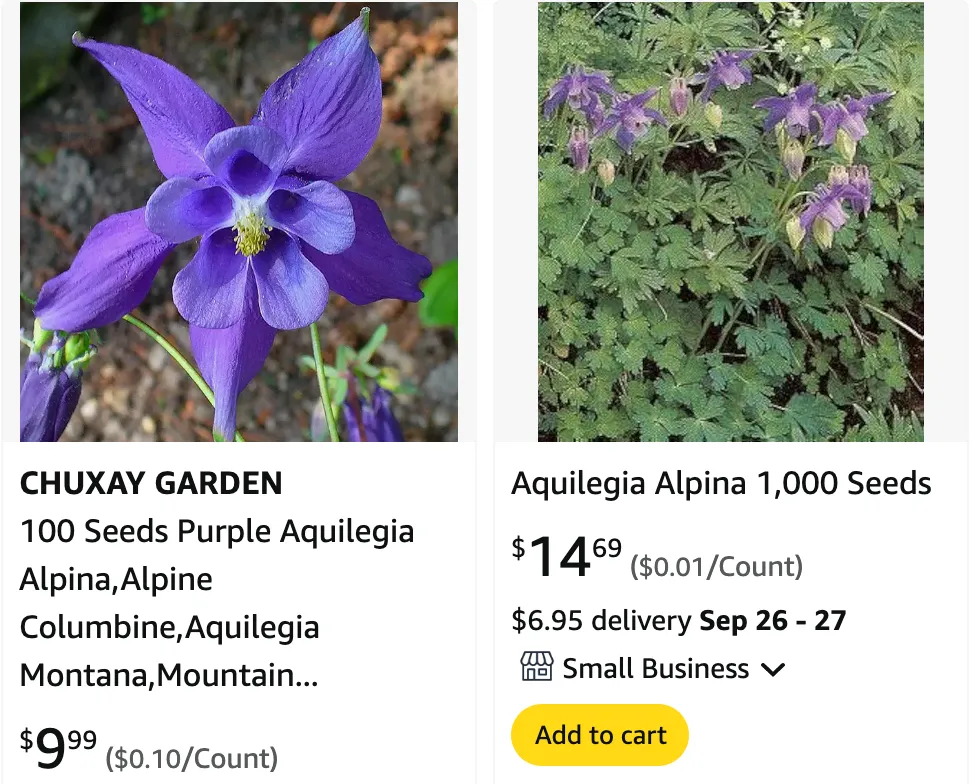
FAQs About Aquilegia Alpina
Aquilegia Alpina, commonly known as Alpine Columbine, is a beautiful and hardy perennial that I’ve grown in my garden for several years. If you’re considering adding this charming plant to your garden, you might have several questions. Here’s a comprehensive guide to help you with everything you need to know about Aquilegia Alpina.
135 Species in Genus Aquilegia – Columbine Flower
When to Plant Aquilegia Alpina?
Aquilegia Alpina is best planted in early spring or late summer. I’ve found that planting in early spring, after the last frost, gives the plant ample time to establish itself before the hot summer months. If you prefer to plant in late summer, make sure to do so at least six weeks before the first expected frost to ensure that the roots have time to settle in.
How to Care for Aquilegia Alpina?
Caring for Aquilegia Alpina is relatively straightforward. Here’s what I’ve learned from my experience:
- Soil Requirements: This plant thrives in well-drained soil enriched with organic matter. I usually mix compost into my garden soil to improve its structure and fertility.
- Watering: Aquilegia Alpina prefers consistent moisture but doesn’t like to sit in soggy soil. I water mine regularly, allowing the top inch of soil to dry out between waterings.
- Sunlight: It grows best in partial shade to full sun. In hotter climates, providing some afternoon shade helps prevent the leaves from scorching.
- Fertilization: I fertilize mine with a balanced, all-purpose fertilizer in early spring to support healthy growth and abundant flowering.
How to Propagate Aquilegia Alpina?
Propagating Aquilegia Alpina can be done through seeds or division. Here’s a quick rundown:
- Seeds: I start seeds indoors about 6-8 weeks before the last frost. Sow them on the surface of moist seed-starting mix and lightly press them in. They usually take about 3-4 weeks to germinate.
- Division: In early spring or late summer, you can divide established clumps. Dig up the plant, separate the root ball into smaller sections, and replant them in well-prepared soil.
What to Plant With Aquilegia Alpina?
Aquilegia Alpina pairs beautifully with other perennials like hostas, ferns, and astilbes. In my garden, I’ve combined it with daylilies and lavender, which creates a lovely contrast in both color and texture. I also like to plant it alongside other columbine varieties for a striking display of different flower shapes and colors.
Can You Grow Aquilegia Alpina Indoors?
While Aquilegia Alpina is primarily an outdoor plant, it can be grown indoors if you have a sunny, cool spot. I’ve tried growing it in a large container indoors, and it did well under a grow light. Make sure the container has good drainage and use a high-quality potting mix.
Is Aquilegia Alpina Toxic?
Aquilegia Alpina is not considered highly toxic, but it does contain alkaloids that can be mildly toxic if ingested in large quantities. In my experience, it’s best to keep it away from pets and small children who might be tempted to nibble on the leaves.
Benefits of Aquilegia Alpina
Aquilegia Alpina offers several benefits:
- Attractive Flowers: Its delicate, nodding flowers in shades of blue, purple, and white add a touch of elegance to any garden.
- Pollinator-Friendly: The plant attracts bees and butterflies, which is great for promoting a healthy garden ecosystem.
- Low Maintenance: Once established, Aquilegia Alpina requires minimal care, making it a great choice for busy gardeners.
Common Problems with Aquilegia Alpina
Despite its hardiness, Aquilegia Alpina can face a few issues:
- Powdery Mildew: This fungal disease can affect the plant, particularly in humid conditions. I’ve found that improving air circulation and avoiding overhead watering helps prevent this problem.
- Slug and Snail Damage: These pests can munch on the foliage. I use organic slug bait and keep the garden area clean to minimize their impact.
How Does Aquilegia Alpina Compare to Other Columbine Varieties?
Aquilegia Alpina is often compared to other columbine varieties like Aquilegia vulgaris (Garden Columbine) and Aquilegia canadensis (Wild Columbine). Compared to Aquilegia vulgaris, Aquilegia Alpina is more compact and has a more delicate appearance. It also tends to be better suited for alpine and rock garden settings. Compared to Aquilegia canadensis, it has a more varied flower color range and is typically a bit more cold-hardy.
I hope this guide helps you in your journey with Aquilegia Alpina. It’s a wonderful plant that adds beauty and elegance to any garden, and with the right care, it will thrive and bring joy for many seasons to come.
If i die, water my plants!



